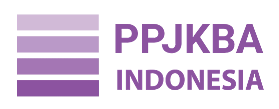Tahlilu al-Akhtha’ ‘an Kitabati Hamzati al-Washli wa Hamzati al-Qath’i fi Kitabi al-Nahw al-Wadih
DOI:
https://doi.org/10.36835/alirfan.v5i1.5509Keywords:
Error Analysis, Hamzah Wasl, Hamzah Qath'iAbstract
: The Book “al_Nahw al-Wadihâ€, Volume Two, printed at the expense of the Bali Library Buku Surabaya. It is one of the books that students use in the education process, especially in schools and institutes. However, researchers found several errors in writing the hamzat al-wasl and hamzat al-qat’ in this particular book in the chapter “Taqsim al-Fi’li ila Shahih al-Akhir wa Mu’tal al-Akhir†This research aims to know the misspelled words and to know the writing of the correct words from the misspelled words in the writing of Hamzat al-Wasl and Hamzat al-Qata’ in that particular book in the chapter “Taqsim al-Fi’li ila Shahih al-Akhir wa Mu’tal al-Akhir†by Ali Al-Jarim and Mustafa Amin. In this research, the researchers used the qualitative descriptive approach, and the approach to research is desk research. The adjective in this research is descriptive and analytical. Then the two data sources used are primary data sources and secondary data sources. The method of data collection is the documentation method. The researchers used the method of content analysis based on the Ellis theory. It is the collection of erroneous words, identification of erroneous words, clarifying the erroneous words and matching them with correct grammar, detailing the erroneous words, and evaluating the erroneous words. The results in this research are that errors were found in writing the hamzat al-wasl with one word, and in writing the hamzat al-qat'a with 15 syllables. The correct writing in the writing of the hamzat al-wasl is written without the hamza in its alif (A), and in writing the hamzat al-qat’ it is written with the hamza in its alifReferences
Ø£Øمد Ù…Øمد أبو بكر. (1411). القواعد الذهبية ÙÙŠ الإملاء والترقيم (الطبعة الأولى).
د. ØµÙ„Ø§Ø Ø¨Ù† عبدالله بن عبد العزيز بوجليع. (2017). كي٠تكتب الهمزة من دون أخطاء؟، الطبعة الأولى. دار ايلا٠الدولية.
Abd Hadi, Asrori, & Rusman. (2021). Penelitian Kualitatif Studi Fenomenologi, Case Study, Grounded Theory, Etnografi, Biografi. CV. Pena Persada.
Abdulaziz, M. F., Rahayu, T., & Rahayu, S. (2014). Analisis Isi (Content Analysis) Buku Sekolah Elektronik (BSE) Pelajaran Jasmani Olahraga dan Kesehatan SMP Kelas VIII di Kota Semarang. 3(1), 2.
Adhi Kusumastuti & Ahmad Mustamil Khoiron. (2019). Metode Penelitian Kualitatif. Lembaga Pendidikan Sukarno Pressind0.
Cambridge Dictionary. (د.ت). Classification. استرجع ÙÙŠ 11 يناير، 2022, من https://dictionary.cambridge.org/dictionary/english/classification
Gusti Yasser Arafat. (2018). Membongkar Isi Pesan dan Media dengan Content Analysis. 17(33), 2.
Handayani, R. (2017). Error Analysis and Interlanguage: Reflection for Indonesian Teacher and Learners. 18(1), 80.
Hazhar Ramadhan Ahmed. (2020). Analysing Errors Made by Kurdish EFL Leaerners in Applying the Rules of Syntactic Structure. 4(34), 259.
Kartika Dewi Lutfianti. (2020). Analisis Kesalahan Penggunaan Ejaan Bahasa Indonesia Pada Teks Eksposisi Karya Siswa Kelas VIII SMP [Skripsi]. Universitas Negeri Semarang.
KBBI Online. (د.ت). Identifikasi. Kamus Besar Bahasa Indonesia (KBBI). استرجع ÙÙŠ 1 مارس، 2021, من https://kbbi.web.id/identifikasi
Merriam Webster. (1828). Classification. https://www.merriam-webster.com/dictionary/classification
Nisja, I. (2018). Kesesuaian Buku Teks Bahasa dan Sastra Indonesia Kelas X dengan Kurikulum 2013. 4(1), 164.
Noortyani, R. (2017). Buku Ajar Sintaksis. Penebar Pustaka Media.
Nur Khoiri. (2019). Metodologi Penelitian Pendidikan. Southeast Asian Publishing.
Nursiap Harahap. (2014). Penelitian Kepustakaan. 8(1), 68.
Putri, N. (2012). Problematika Menulis Bahasa Arab. 1(2), 173.
Razin, A., & Razin, U. (2015). Ilmu Nahwu Untuk Pemula (2 Ø·).
Sari, A. W. (2017). Analisis Kesulitan Pembelajaran Nahwu Pada Siswa Kelas VIII MTs Al-Irsyad Gajah Demak Tahun Ajaran 2015/2016, Lisanul Arab: Journal of Learning and Teaching. 6(1), 17.
Suci Arischa. (2019). Analisis Beban Kerja Bidang Pengelolaan Sampah Dinas Lingkungan Hidup dan Kebersihan Kota Pekanbaru. 6(1), 8.
Susanto, G. (2007). Pengembangan Bahan Ajar BIPA Berdasarkan Kesalahan Bahasa Indonesia Pembelajar Bahasa Asing. 35(2), 232.
Vina Herviani & Angky Febriansyah. (2016). Tinjauan Atas Proses Penyusunan Laporan Keuangan Pada Young Enterpreneur Academy Indonesia Bandung. 8(2), 24.
W. Gulo. (2000). Metodologi Penelitian. PT. Grasindo.
Zainal Arifin. (2012). Evaluasi Pembelajaran (Cetakan ke-2). Direktorat Jenderal Pendidikan Islam Kementrian Agama RI.
Downloads
Published
How to Cite
Issue
Section
License
Copyright (c) 2022 Dewi Nurhayati, Dzuriyati Afifah, Moh. Wardi

This work is licensed under a Creative Commons Attribution 4.0 International License.
Lisensi :
Al-Irfan: Journal of Arabic Literature and Islamic Studies is published under conditions Creative Commons Attribution 4.0 International License / CC BY 4.0 This license permits anyone to copy and redistribute this material in any form or format, modify, modify, and make derivative works of this material for any purpose, including commercial purposes, so long as they credit the author for the original work.











